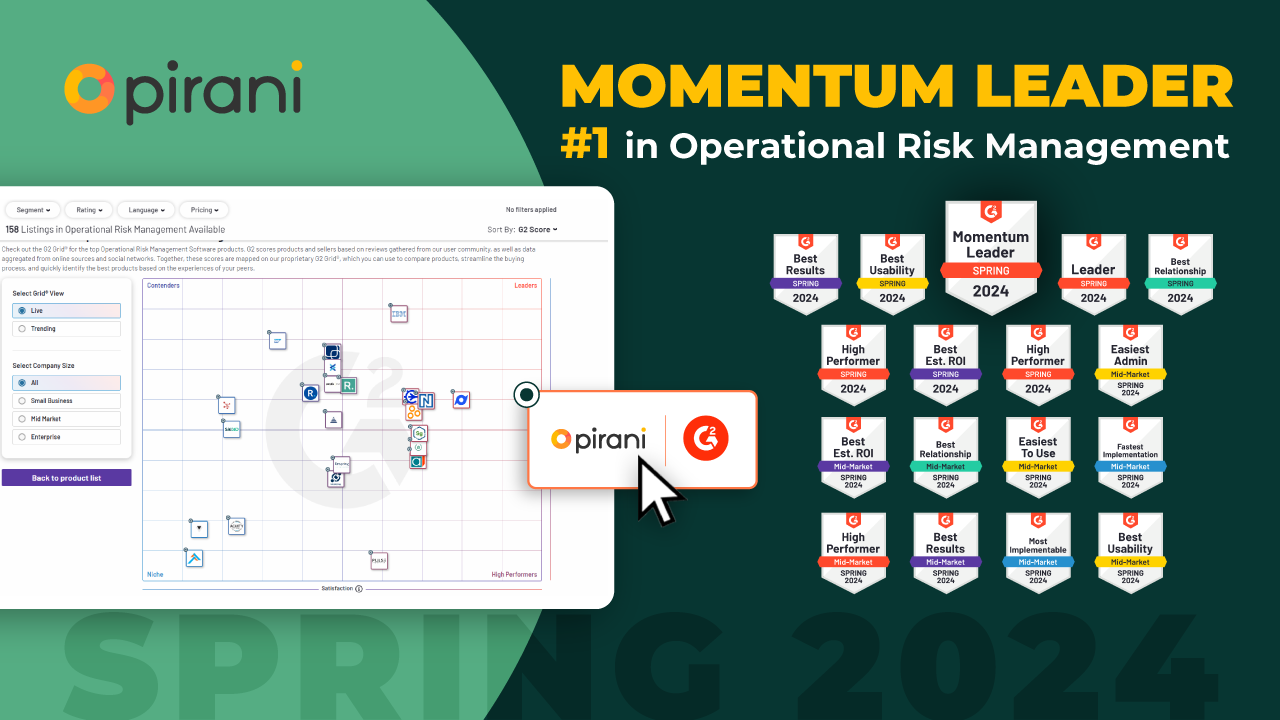How Risk Management Links to Business Innovation

Companies constantly seek to develop new products, improve their ideas and optimize their work, enhance creativity, and create new projects. However, achieving success is not accessible if other vital factors are not considered.
According to Harvard Business Review, only 35% of the innovation projects undertaken worldwide are successful. What are businesses failing to achieve the desired innovation? Poor risk management could be hindering your innovation process.
Join us today and discover the symbiotic relationship between risk management and innovation within the company. The strategies must address these aspects to achieve growth and long-term sustainability.
Let's dive in!
What is business innovation?
The word innovation refers to devising, conceptualizing, developing, and marketing new products or processes to optimize or improve how people carry out their activities. The term "business innovation" mainly focuses on changing how activities are developed within a company to generate a radical renovation in its activities.
Through innovation, companies seek solutions to ongoing problems within their business activities or internal processes for efficient development, such as reducing time or costs, simplifying processes, reducing the carbon footprint, etc.
Where does risk management come into play in all this?
Read on!
Risk management in the innovation process
An effective risk management model is a crucial element to consider during the implementation of radical changes; this is because innovation itself involves taking risks in the search for improvements to solve problems or simplify processes, and unexpected events may threaten the continuity of the project. For this reason, teams must evaluate the possible obstacles or threats that may affect the progress of their process to be prepared and manage to control or minimize the consequences.
Let's look one by one at the phases of the innovation process that links to risk management:
- Ideation: taking risks
As mentioned above, innovation is a process of creating something new, improving the products offered, or developing a new one. However, relevant and valuable ideas are examined in this conceptualization of ideas, such as what solutions it provides, how it opens the doors to the market and its benefits.
For them, risks must be taken; resources must be invested, and unknown avenues and opportunities must be explored to improve the customer experience or achieve the objectives set by the company more quickly.
- Conceptualization: risk identification
During this phase, it's crucial to carefully analyze the ideas proposed at the beginning. You should compare them with each other, consider how they could be implemented, identify the market they target, determine which customer needs they satisfy, and explore ways to differentiate them from your competitors. However, keep in mind that there is always some level of uncertainty involved. Despite your planning, there are potential challenges that could arise, such as poor market reception, material shortages, distribution problems, failure to meet standards during creation, or data breaches.
Good business risk management allows teams to identify, segment activities and subjects, evaluate, and manage these potential threats to determine with precision how likely the risk will materialize and the consequences it would bring. From there, the right decisions can be made to maintain the business innovation strategy to avoid failure.
- Solution: mitigation of the potential impact
At this point of the process, the development or implementation of the change corresponds, whether you are seeking to create a new product or streamline any of your internal methods; in both cases, you must ensure compliance with national and international production protocols, respect for intellectual property, examine the efficiency of the supply chain, the safeguarding, and management of data, to avoid cyber-attacks, as well as any other potential risk. You can use it to track and modify your risk management plan as your innovation project progresses.
Pro tip: Continuous testing allows you to develop and implement risk mitigation and contingency plans for potential failures.
Pirani: a risk management model the innovation engine
To understand this correlation, we have to start with the definition of risk, which is the threat, uncertainty, or probability that an event that negatively impacts something or someone will occur. This uncertainty or expectation that damage will happen may represent an opportunity for change. Why? Suppose the company discovers failures or vulnerabilities through the implemented risk management model during its processes. In that case, it will look for innovative solutions that will allow them to correct or prepare to mitigate or control the negative impact.
- Control
Risk control leads to the analysis of all pre-existing variables in a company's internal processes, from which team members can identify potential threats, prioritizing the ones that may have more severe consequences for their productivity or profitability. It can be the starting point to know precisely what needs to be changed, what needs to be improved, what process steps could be eliminated, and what issues need to be reinforced to make the way of working more efficiently.
- Evaluation and decision making
The assessment of the risk history in operations, and the detection of system failures, team member errors, or misconduct can lead, for example, to the creativity and creation of automated processes to reduce manual work.
Risk management allows making informed decisions about what merits radical change to prioritize investment based on the company's business objectives.
What are the concrete benefits for the company?
Find out below!
Advantages of implementing a business innovation strategy with an effective risk management
- It facilitates problem-solving.
Companies seek to satisfy customer needs through business innovation processes more efficiently, quickly, and quickly. It aims to create an authentic customer experience when acquiring products or using its services intuitively and with personalized attention.
- Boosting the company's adaptability
Any company, regardless of its industry, size, resources, or time in the market, is exposed to unexpected changes or variations. Beyond being accepted by its target audience, the real challenge lies in staying afloat and maintaining its position. Hence, innovation is vital to improve its internal processes and to have the tools to adjust quickly to changes.
It raises the company's competitiveness.
Innovation helps companies develop tactics to gain market share, for example, devising a new product or offering a unique service. However, the critical point of innovation is that it allows its conceptualization, design, and production to result from a structured, sustainable, and easy-to-implement process.
Did you find this article interesting, and would you like to know more about Pirani?
Please, comment below; we read you!
You May Also Like
These Related Stories

Pirani as "Momentum Leader" according to G2 Grid

Take Advantage of Black Friday to Manage Risk Better

Crafting Risk Management Plan: Step-by-Step Guide

Greenwashing and its relation to reputational risk

NIST Risk Management Framework: Cybersecurity Practices


No Comments Yet
Let us know what you think